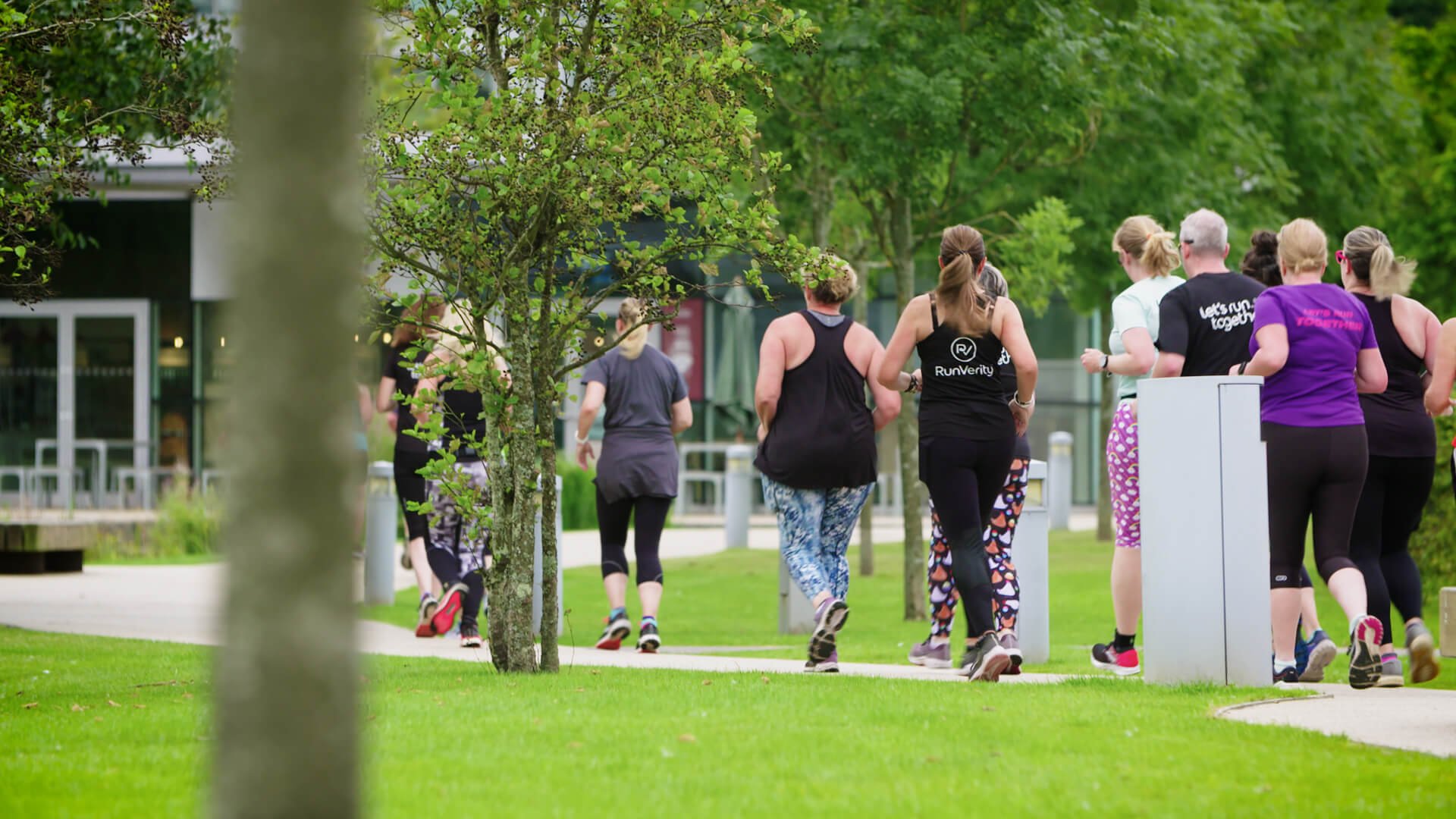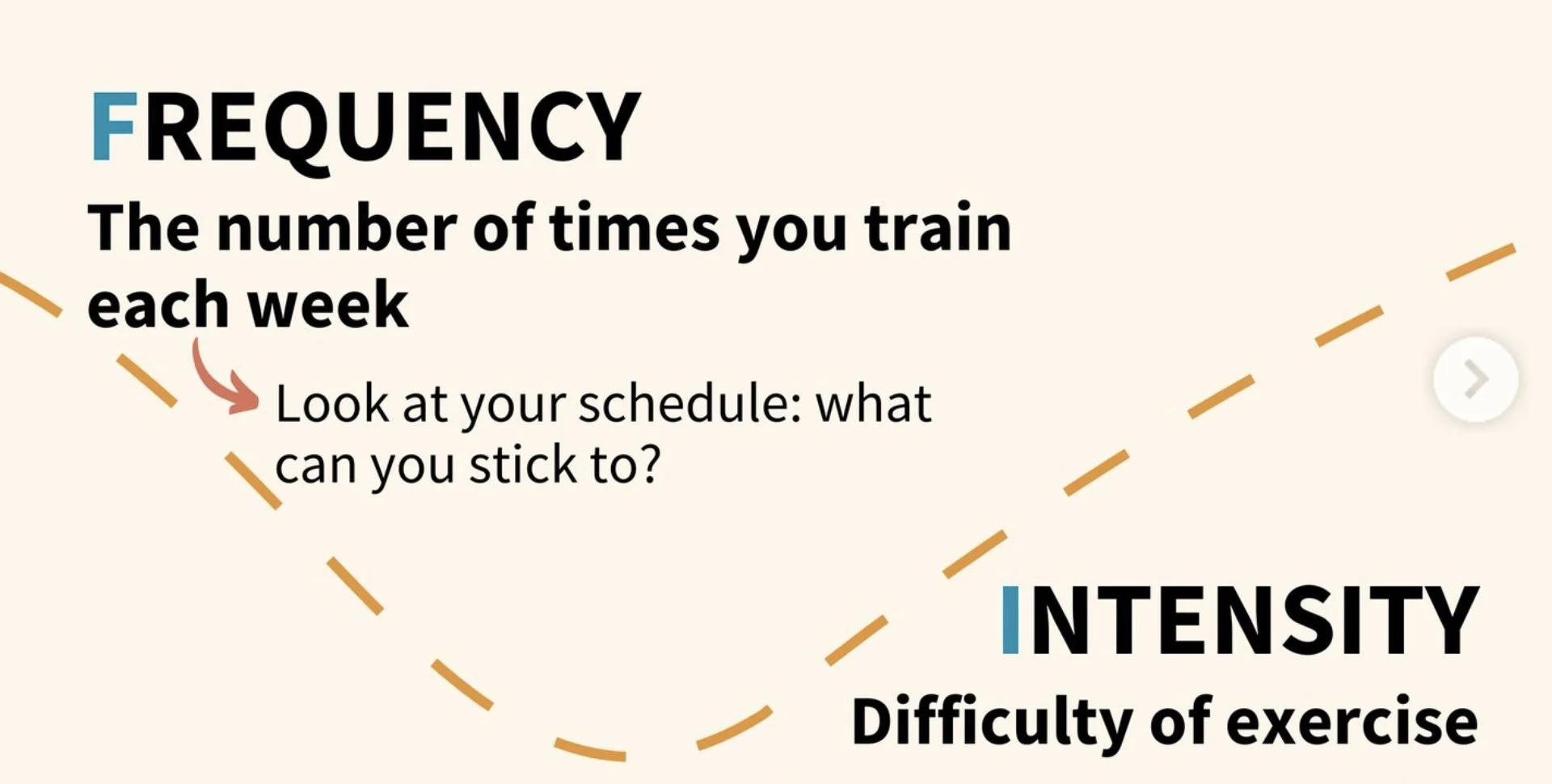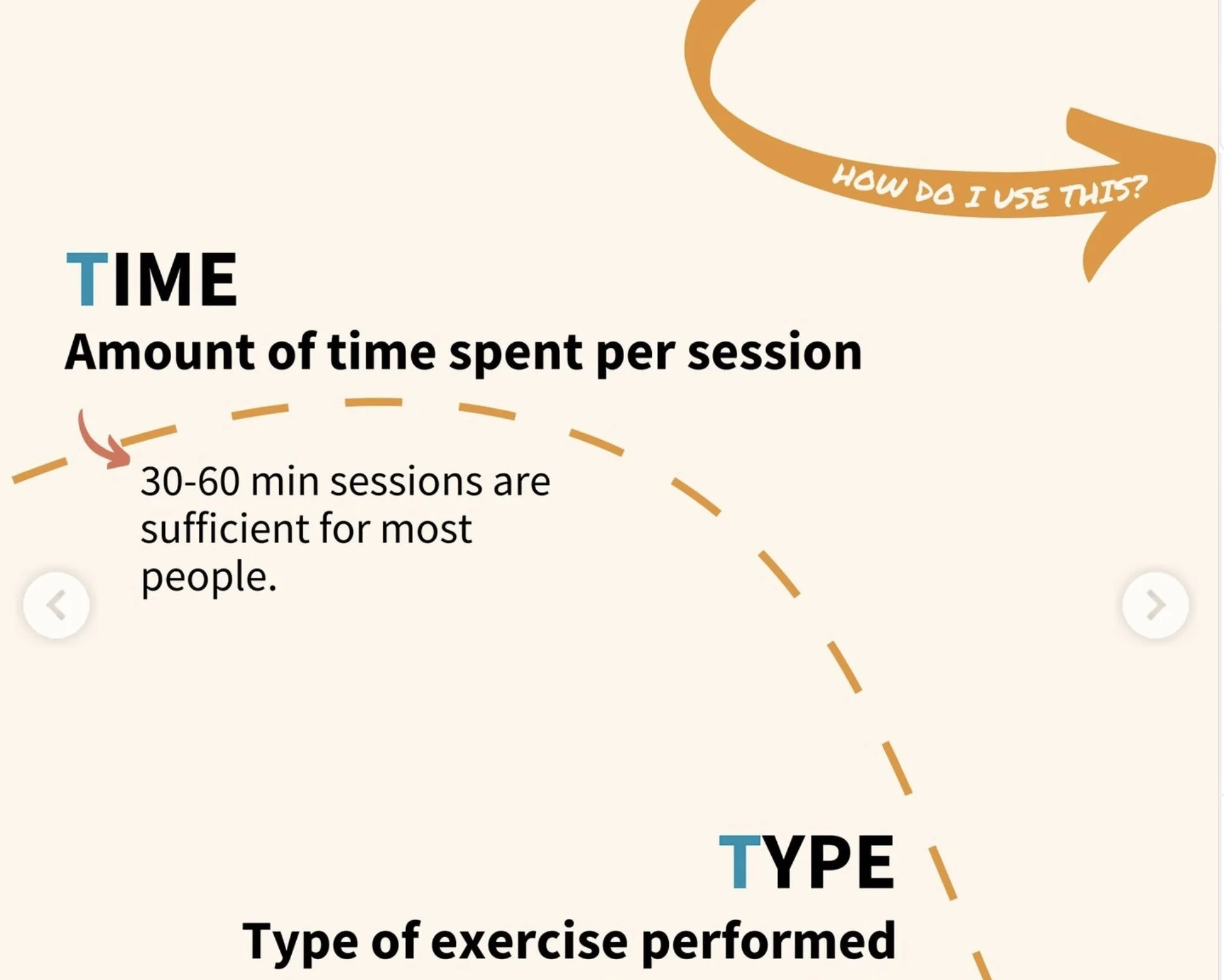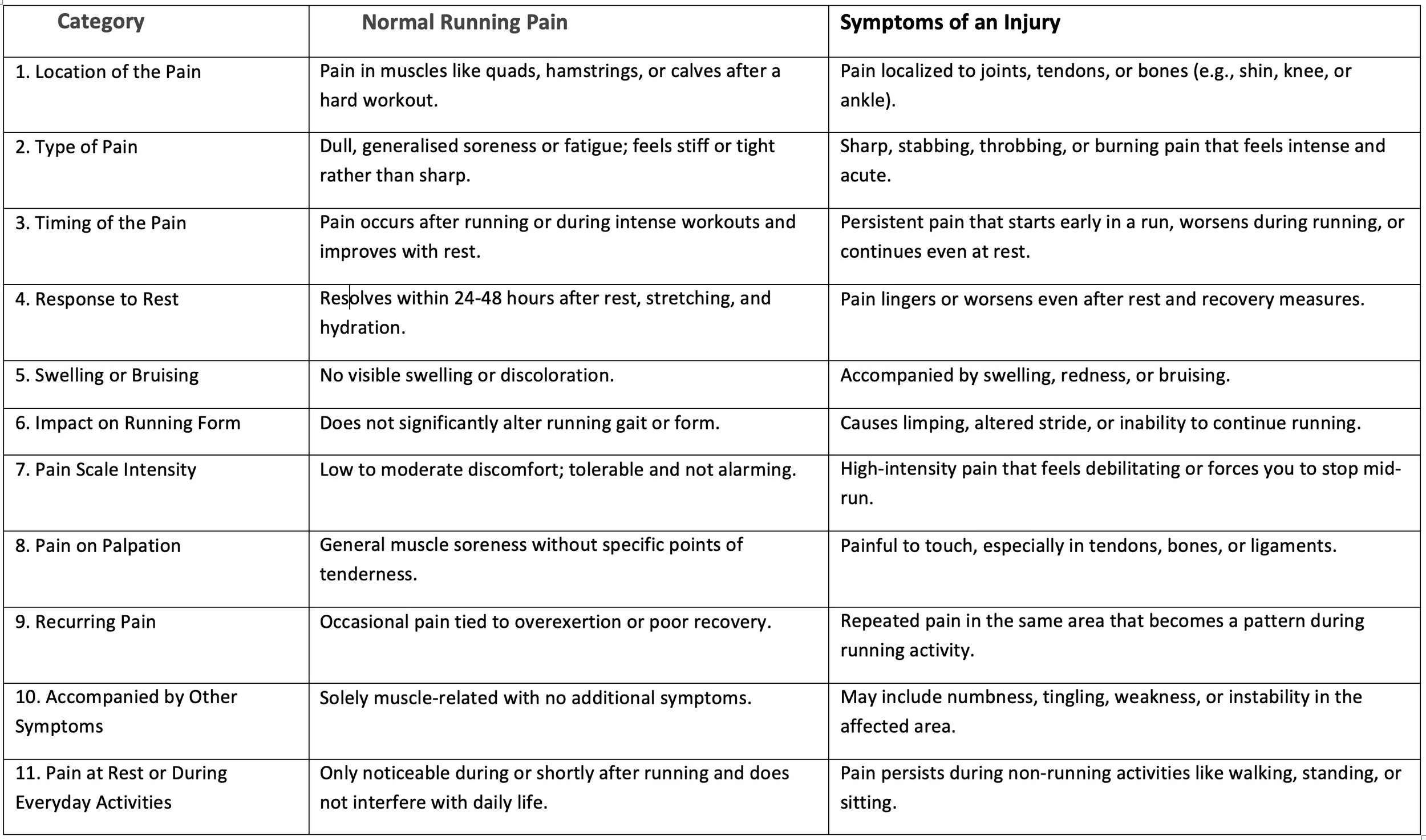
RunVerity Beginner’s Week 6
Forming the Foundations
Let’s dive into how to keep your routine moving forward using the F I T T principle
Frequency, Intensity, Time, and Type
Frequency: how often can you run each week?
Intensity: difficulty of your run. Our focus is running at an easy pace, what we call “talking pace”. As you develop and progress throughout the course and beyond, you can ddjust the intensity of a run in a safe environment, ensuring you push yourself enough to improve but don’t risk an injury.
Time: amount of time spent per session & our programme gradually increases the time you run for, and reduces the amount you walk for, this helps build/forms those foundations safely.
Type: type of running you do (e.g., easy runs, intervals, or cross-training), we always start off with easy runs, as you progress you can change the type of run you do, this helps you develop speed and endurance, meaning you will be able to run for faster for longer, but remember, we need to lay the foundations first.
Injury Prevention
Warm Up Properly
A proper warm-up prepares your body for running by increasing your heart rate and loosening your muscles. Spend 5-10 minutes warming up by walking briskly. This helps improves circulation, enhances flexibility, and reduces the risk of muscle strains.Focus on Technique
Using correct form is vital for preventing injuries, especially when starting running. Each week we focus on the correct running techniques so you can practice good posture and alignment which helps you avoid unnecessary stress on joints and muscles.Progress Gradually
One of the biggest mistakes beginners make is trying to do too much, too soon, too quickly! Follow the F I T T principles otherwise you could overtrain leading to fatigue and injuries like stress fractures or tendonitis.Wear Appropriate Gear
Ensure you have the right equipment for running, supportive running shoes are a must, and it’s vital that they are comfortable above everything else. Having the right trainers (see below) reduces impact, and minimises the risk of injury.Listen to Your Body
Pay attention to how your body feels during and after a run. Soreness is normal, but sharp pain or discomfort could indicate an injury. Rest when needed and don’t push through pain. Adequate recovery, hydration, and sleep are equally important for staying injury-free.
Download the quick quide of what’s “normal vs injury” running pain here
Key Points for Week 6.
-
Your goal should be to find a shoe that offers the best support and fit for you and you should replace your shoes every 300-500 miles, note the date that you bought your shoes and my advice would be to always visit a specialist running shop.
Each foot strikes the ground about 800 times per mile and hitting the ground with the force of about eight times your body weight! Getting the right trainer can make the difference between running well or not running at all. Running trainers protect the feet from the environment, cushions the impact and stabilises the foot. As we are all unique and every runner's foot shape is different, it is important to get your trainers fitted by a specialised running shop. Saying that most runners do fit into one of three general types; neutral, overpronator and under pronator and a running shop will be able to advise you on the best shoe for your running type. They do this by recording where your foot lands whilst running on a treadmill, so nothing too scary.
Take your time making your selection and invest in the best shoes you can find and can afford, look to pay about £100, if you buy cheap you may pay for it in the long term and if you want to keep on running you need to invest in yourself. You are looking for 5 basic things, flexibility, cushioning durability, motion control and comfort, please do not worry about colour or brands. Most running shops offer 10% discount if you say you run with RunVerity.
I would also invest in a good pair of running socks, again aim to spend about £10 on these as they have great cushioning which helps protect and cushion when you run.
As for running clothes, just stick to what is comfortable, you don't need to go and spend a fortune on the latest gear, a base layer, t-shirt and a pair of running leggings are fine. For ladies another good investment is a bra, when I first started out I had not got a clue and wore 2 normal bras and I remember being laughed at by 2 girls on the starting line of the Great North Run. I didn't realise there were even sports bras! Anyway, a good make is Shock Absorber and Freya, again a running shop will have these brands, and try different sizes of bra on in the shop.
Week 6 Homework
1.
Warm up by walking briskly to increase the heart rate.
2.
Run for at an easy pace, try not to look at your watch, just enjoy the run.
3.
Aim for 30 mins run/walk then cool down.



